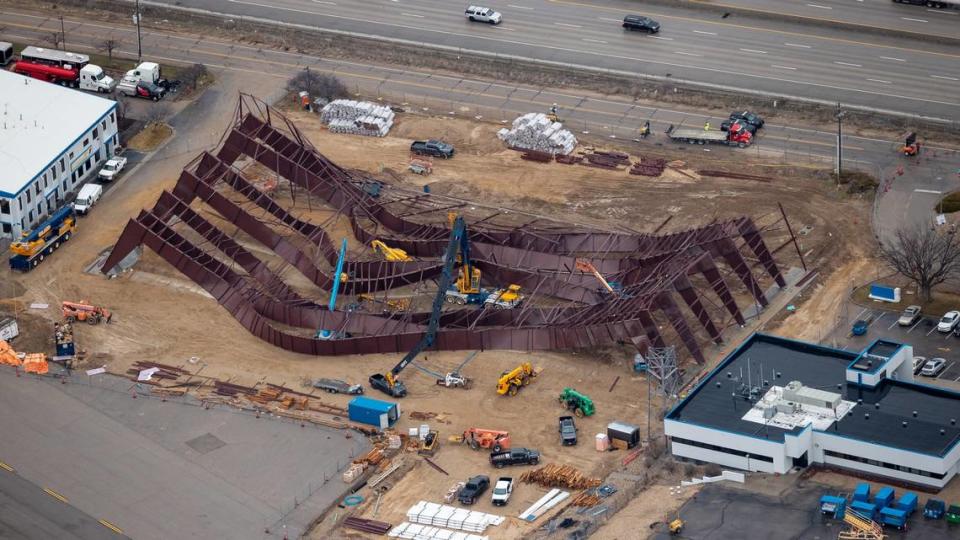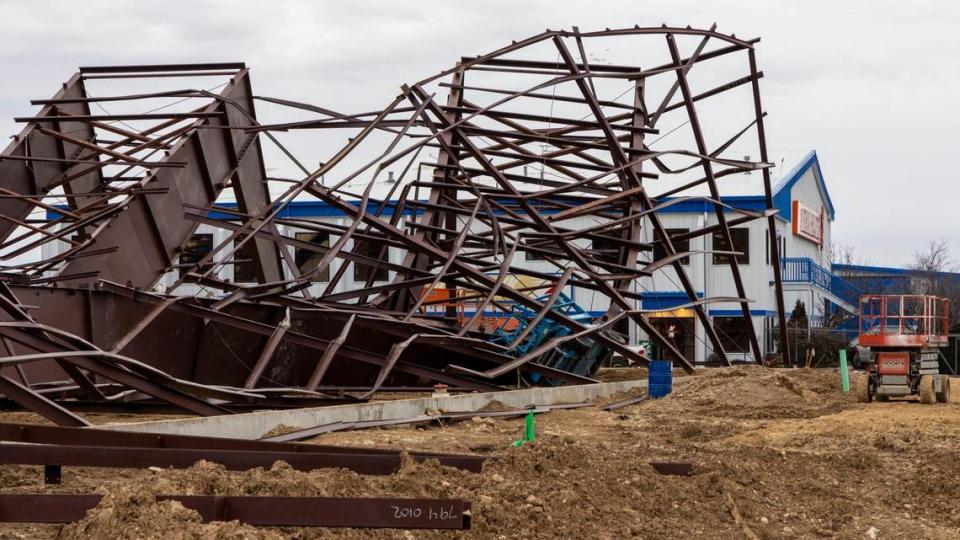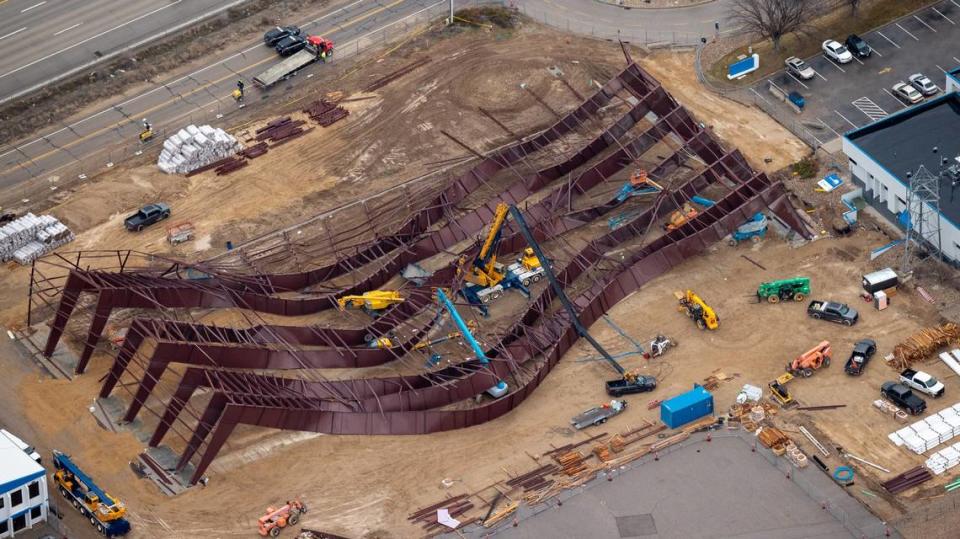Update: OSHA to hand wreckage of the Boise Airport hangar collapse back to builder, owner
Update Thursday, April 25, 2024: The U.S. Occupational Safety and Health Administration, or OSHA, announced that it would turn over the site of the collapsed jet hangar to Big D Builders and Jackson Jet Center by the end of day Friday.
Mike Peterson, a spokesperson for OSHA, told the Idaho Statesman that the investigation into the collapse is still underway but that OSHA had finished its analysis of the site.
“There’s still more work to be done,” Peterson said by phone. “There’s a lot of details with this one.”
Peterson said the investigation will be completed within six months of the Jan. 31 collapse, meaning near the end of July, and that OSHA would release more information when it wraps up.
This is the original story posted April 18, under the headline “Wreckage of the Boise Airport hangar collapse is still standing. Why, and what’s coming”:
The hangar that collapsed near the Boise Airport in January could be demolished and rebuilt in the same spot. But for now, the wreckage remains in place.
Big D Builders, the contractors for the hangar, submitted an application April 3 to the city of Boise to demolish and deconstruct the collapsed steel-and-concrete structure.
“(The) building (is) to be rebuilt using (the) existing building permit, with modifications to be made to structural drawings,” according to the permit.
Big D Builders said it would disturb about three acres of the property at 4049 W. Wright St. to demolish the rest of the building. The steel would be recycled while the concrete would be crushed and used as fill elsewhere.
The demolition is valued at $4 million, according to the permit, which has yet to be issued.
“They have applied for a demolition permit; however, the permitting process is on hold until OSHA clears the site,” said Lindsay Moser, communications manager in the city’s Planning and Development Services Department, in an email. “That has not happened yet.”
OSHA is the U.S. Occupational Safety and Health Administration, whose investigation of the collapse could take up to six months, according to prior Idaho Statesman reporting.
Crews were building a 43-foot tall, 39,000-square foot engineered steel hangar for the Jackson Jet Center when it collapsed on Jan. 31, killing three people and injuring nine.

Big D Builders co-founder Craig Durrant and two construction workers, Mario Sontay Tzi and Mariano “Alex” Coc Och, died in the collapse.
Big D Builders declined to comment on a list of questions for this story, citing the investigation and pending litigation.
What was the building?
Jackson Jet Center sought to expand its business — which includes jet maintenance, supplying aircraft parts and charter flights — with the $6.2 million new hangar after the Boise Airport required the company to vacate its existing hangar for a planned airport parking expansion.
Pre-engineered buildings like the hangar are common for warehouses or other industrial uses and are relatively cheap and easy to put together.
Brian Rigby, the president of Local 732 of the Ironworkers Union, which covers Montana and Idaho, previously told the Statesman that pre-engineered buildings like the hangar are built from steel parts that are shipped to the site and put together like Ikea furniture.
“Pre-engineered metal buildings are a prefabricated box of Legos,” Rigby said in February.

What caused the collapse?
While the collapse is still being investigated, multiple workers noticed problems with the structure before it collapsed, including bending beams, snapped cables and structural issues, according to Boise Police Department records.
An employee for Boise’s Inland Crane told police that the company supplied cranes for the project to “straighten out the hangar because portions of it were bending,” according to prior Statesman reporting. Others reported that there weren’t enough cross-sections to support overhead beams that weren’t straight.
Four cranes were working on the hangar throughout that Wednesday and had finished most of the work by that afternoon, according to a Feb. 1 statement from Jeremy Haener, vice president of Inland Crane. The company moved three of the cranes off the site and left the last one to place a part of the roof when the structure collapsed around 5 p.m.

Haener said neither the cranes nor the operators were responsible for the collapse.
Craig Durrant, a co-founder of Big D Builders who died in the collapse, spoke with an engineer before the collapse about structural issues workers had brought to him. Durrant told an employee after talking with the engineer that the frame was fine, as workers had added straps to the beams and were placing more roof supports.
A superintendent for Big D Builders told police that he didn’t see anything out of the ordinary, according to prior Statesman reporting.
‘Did not look right’: Workers flagged concerns before deadly Boise hangar collapse
What was that Boise building that collapsed? Here’s what we know about its construction
Safety record of contractor for Boise collapsed hangar surfaces as OSHA investigates
Was it wind? How a bridge’s failure may shed light on fatal Boise Airport hangar collapse


